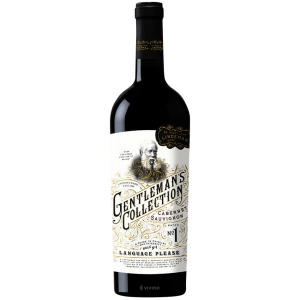
Australian wine is often considered in terms of its most well-known variety: large, fruit-forward reds that go well with any kind of grilled meat. The variety of wines produced in the Land Down Under, however, is far wider and more diverse than it is sometimes given credit for since it is a whole continent. Let’s look at it.
The variety of grapes grown in Australia is comparable to that of any other significant wine-producing nation, ranging from Chardonnay and Merlot to Cabernet Sauvignon and Riesling, and practically everything in between. The nation’s current calling card is Shiraz. However, there are other outstanding grapes as well, including Grenache, particularly in McLaren Vale, Riesling in the Clare and Eden Valleys, and Cabernet and Chardonnay in Margaret River.
Many Australians like to drink wines from the regions in which they are produced, whether those regions be the Barossa Valley, Clare Valley, McLaren Vale, Margaret River, or elsewhere. Overall, McLaren Vale wines are in second place to Barossa wines in terms of popularity. Both Australian red wine and Australian white wine are very well-liked and well-known outside of the Land Down Under. And since Australian wine is created in so many various ways and by so many distinct Australian wine companies, there is always something to suit wine enthusiasts’ moods. The most well-known Shiraz in the world is probably Australian, both because it’s simple to locate a great bottle without having to pay a lot of money and because the Shiraz from that country is so distinctively decadent—ripe, generous, fruit-forward, and rich. Australian Riesling, Australian Sauvignon Blanc, and Australian Chardonnay are all deservedly well-known wines (which in general tends to be a bit less grapefruit- and gooseberry-forward as the Sauvignon Blanc from New Zealand). Australia has some of the top wine regions in the world, regardless of where you are.
How can we know what we’re buying is a fantastic deal and a terrific drop when there are so many different Australian wines available on the market right now at every single price point? In terms of wine value, more pricier bottles contain much higher-quality grapes. Once the price of a bottle of wine exceeds $30, you are typically getting a better product overall. For example, your wine is likely coming from a small production run and is likely being aged for a longer period of time in French oak barrels rather than the more affordable American oak or even metal. It may also have better corking and glass. For your convenience, we’ve compiled a selection of our most well-liked, staff-selected wines priced under $50 so you can choose the ideal beverage for a special occasion. All of our choices may be delivered right to your door anywhere in the USA.

Where is wine made in Australia?
All six of Australia’s states make wine, although the southeast produces the great bulk of it. The most significant states for wine production are New South Wales, Victoria, and particularly South Australia since the milder conditions are better for viniculture. The latter generates around half of the nation’s yearly production.
Only 2% of Australia’s total output is produced in Western Australia. The state’s greatest wineries, however, are widely renowned on international markets for a wine style that is significantly unique from that of the rest of the nation. The Margaret River region’s Bordeaux red blends, which account for around 20% of the nation’s excellent wine production, are especially well-known.
Australian Wine Styles
Overall, the southerly latitude has a significant impact on the mesoclimates of Australia’s wine-producing areas, which are characterized by a steadfast Mediterranean climate with warm, dry summers and chilly, rainy winters. Regional characteristics like height and closeness to the seas are also important.
From the extremely rich reddish-brown soil of the Riverina to the old, weathered granite-based soils of Margaret River, soil types vary widely. The terra rossa of the Coonawarra area in southwest South Australia is the most well-known soil type in the Australian wine industry. Iron ore content is high in the bright red clay-loam, which is perched on top of a limestone base with remarkably efficient drainage. It is a common soil type for wine cultivation, yielding Cabernet Sauvignon that is very fragrant. Both the La Mancha area of Spain and the Carso region of Italy have similar soil types.
A wide range of wine types are produced as a consequence of the diversity of the terrain and the growing environment. As an example, the Barossa Valley in South Australia produces the popular Shiraz. The majority of Australia’s top Rieslings are produced in the nearby Eden Valley, which is located at higher elevations. The Clare Valley portfolio also includes exquisite Chardonnay and Riesling in addition to bold reds.
The Mornington Peninsula in Victoria is one of the coastal-influenced regions that grows grapes in milder climates. A Mediterranean climate is created farther north on the Fleurieu Peninsula by the sea’s moderating effect. Tasmania, which is located 240 kilometers (150 miles) south of the continent, is best recognized for its elegant Pinot Noir and sparkling wines.
















